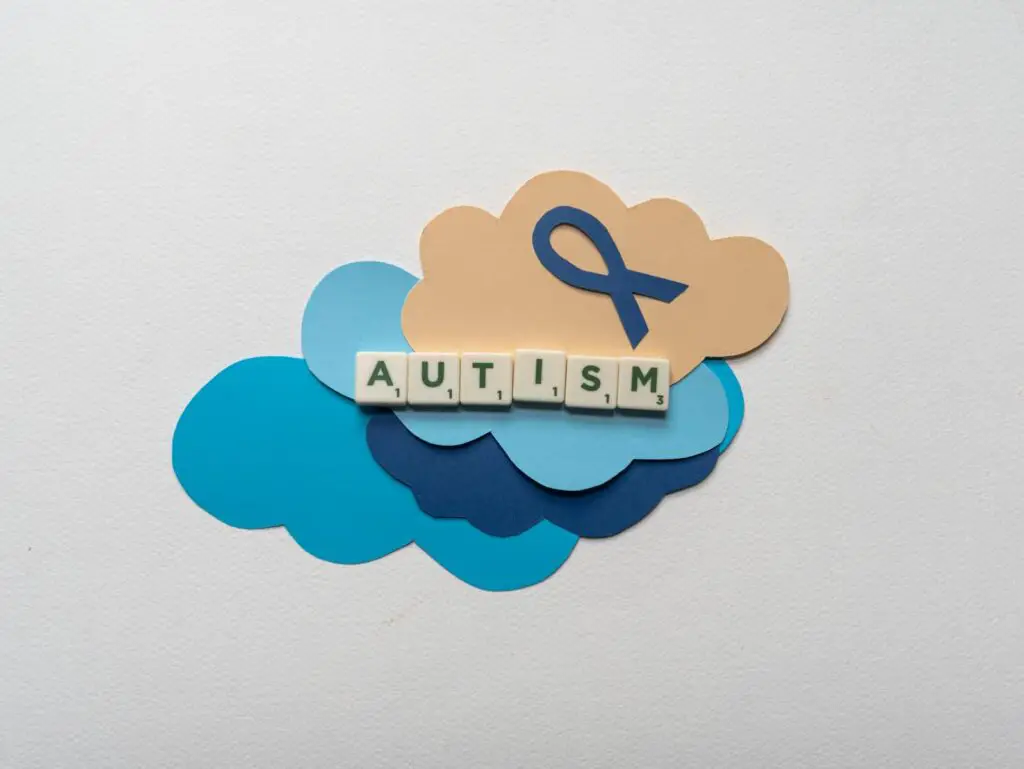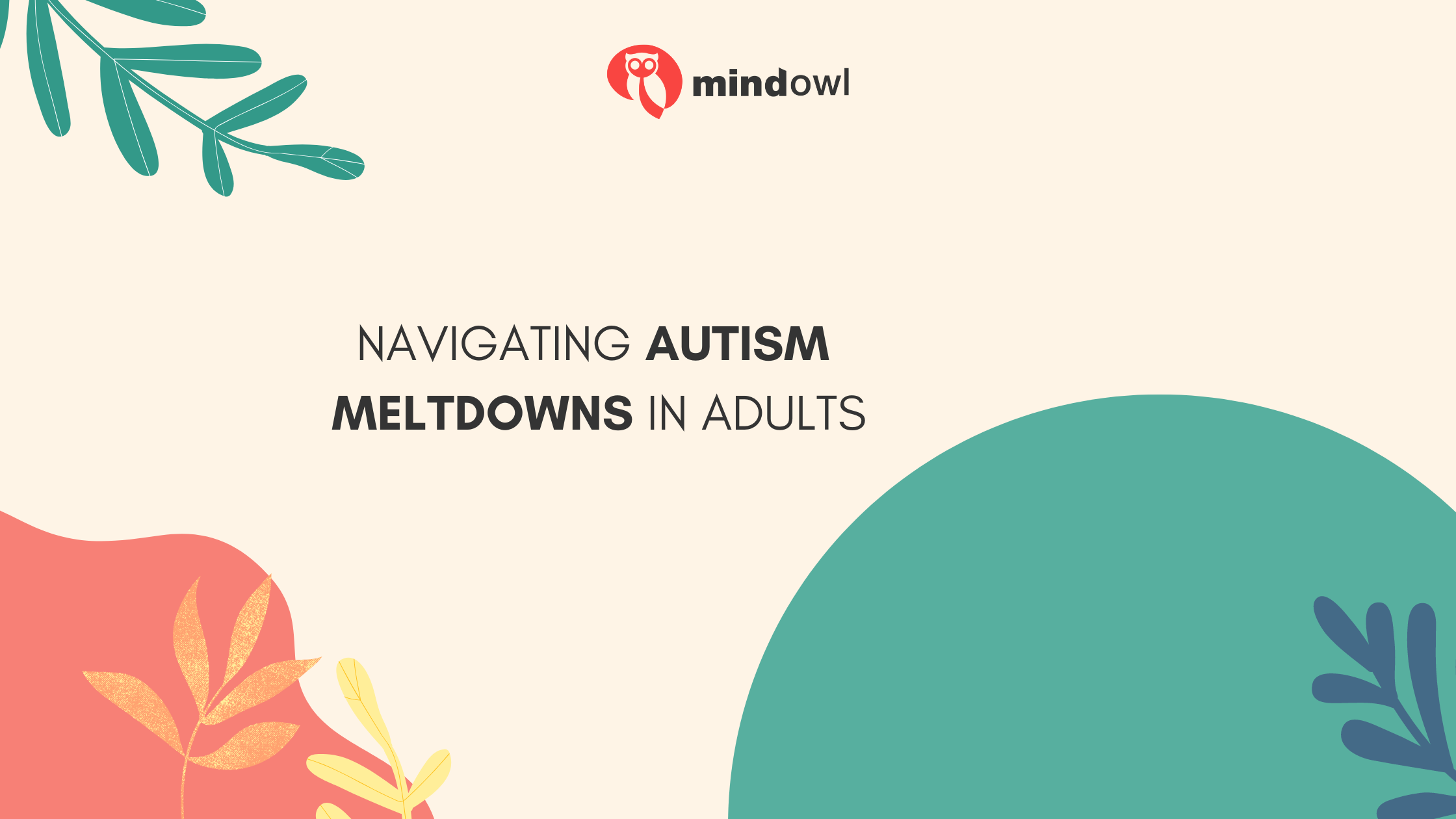Have you ever wondered why, sometimes, adults with autism seem to suddenly lose control? This might happen in public or at home. It’s called a meltdown and it’s common for many autistic adults.
A meltdown is not just getting upset. It’s much more intense and overwhelming.
One key fact about meltdowns is that they’re not tantrums. They have strong reactions to feeling too much from the world around them—like loud noises or bright lights—or big changes in their daily life.
Our article will show you what triggers these intense responses and how to help someone during a meltdown. We’ll give tips on creating a supportive environment for autistic individuals.
Key Takeaways
- Autism meltdowns in adults happen when sensory input and emotions become too overwhelming.
- Common triggers for these meltdowns include sensory overload, changes in routine, social anxiety, and emotional stress.
- To support someone experiencing a meltdown, recognising early signs like increased agitation or physical cues such as pacing is important.
- Coping strategies like mindfulness techniques and cognitive behavioural therapy (CBT) are valuable tools for managing social anxiety and reducing the occurrence of meltdowns.
- Providing non-judgmental support during and after a meltdown is vital for creating an inclusive environment.
What is an Autism Meltdown?
An autism meltdown is a powerful response to feeling overwhelmed, distressed, or unable to cope. It’s not something one chooses to do; rather, it happens when the emotions and sensory inputs become too much to handle.
People experiencing an autistic meltdown may cry, yell, flap their hands, or engage in intense repetitive movements. These actions are ways of dealing with the overflow of information and feelings they can’t process in that moment.
Meltdowns can take quite a while – sometimes lasting from just ten minutes but they might stretch out for more than an hour. Autistic individuals have neurons that connect more than usual.
This means their brains get flooded by the things around them way easier than others’. During a meltdown, folks don’t have control over what they’re doing. Calling it a tantrum underestimates what’s really happening – it’s not about getting attention but trying desperately to manage an unbearable situation.

Causes of Autism Meltdowns in Adults
Sensory overload
Sensory overload happens when the brain gets more information from the senses than it can handle. People on the autism spectrum feel this intensely. Their neurons are more connected, making them easily overwhelmed by what they see, hear, smell, taste or touch.
This can trigger a meltdown. Think of a room where music blasts loudly, lights flash brightly and many people talk at once. For someone with autism, this is too much to process.
The Autism Research Psychiatric Association shows that sensory overload leads to central nervous system overwhelm in autistic individuals. They might have an increased heart rate or their face might go red.
They also may not like certain textures or loud noises. Simple things like putting on headphones can help block out excess noise and prevent meltdowns. Using a heavy blanket might make them feel secure when they are feeling overwhelmed by their surroundings.
Changes in routine
Routines matter a lot for autistic adults. A sudden change can cause burnout, meltdown, or even shutdown. These are parts of many autistic individuals’ lives. The stress comes from having to act in ways that feel unnatural or forced, often referred to as “masking.” Without routines, the effort needed to mask increases greatly.
Changes in routine can lead to burnout, inertia, meltdown, and shutdown in autistic individuals.
Finding ways to avoid sudden changes helps prevent meltdowns. When routines are steady, autistic adults might handle tasks better. This makes their day smoother and less stressful.
Keeping things predictable is key for calmness and stability.
Social anxiety
Social anxiety affects a lot of people with autism, including adults. About 40% of them face anxiety disorders and social fears. Between 13-40% meet the criteria for social anxiety disorder.
This shows how common it is. Adults use different ways to cope with these feelings. They might avoid situations, practice conversations in their head, stay quiet, or even drink alcohol.
Treatments like cognitive therapy work well for social anxiety. These strategies help by changing thinking patterns and reducing fear during social interactions. Putting these coping techniques into action can make a big difference.
It eases the stress that leads to meltdowns and improves their mental health and quality of life.
Emotional stress
Emotional stress hits hard for autistic adults. It’s like carrying a heavy bag that gets heavier with each step. Imagine trying to keep a calm face, or “masking,” when inside you’re in a storm of worry and frustration.
This act can drain their energy, leaving them feeling very tired. It’s tough because emotional stress doesn’t just tire out the mind; it makes dealing with everyday tasks much harder.
A study by Phung et al., highlighted in 2022, shows this pattern clearly. Autistic burnout is real – it’s like hitting a wall where moving forward feels impossible. And before someone knows it, they’re facing a meltdown or shutdown because the pressure became too much.
Keeping an eye out for these signs is key to offering the right help at the right time, whether that means stepping in with support or giving space as needed.
Recognising Signs of an Impending Meltdown
Physical cues
Increased heart rate or quick breathing, a hot and red face, and sweating signal that an autistic adult might soon have a meltdown. These signs show the body’s stress response kicking in.
A person may clench their fists tightly, muscles become stiff, and the way they stand or move can change. Paying attention to these physical cues helps spot when someone is getting overwhelmed.
Hypersensitivity to noises or how things feel can be too much for some individuals with autism, leading up to a meltdown. Seeing someone cover their ears more than usual or pulling away from textures they usually don’t mind could mean they’re finding the environment challenging.
It’s key not to hold them down or scold them during these times. Offering comfort without overwhelming them further can support adults experiencing meltdowns.
Understanding and responding gently to physical cues in autistic adults can make a huge difference in managing overwhelming situations effectively.
Verbal indicators
Changes in how someone talks can be a clue to an upcoming meltdown. People might stop talking much or at all. This shift from their usual way of communicating is a big sign they’re struggling.
They might find it hard to put their feelings into words, making conversations shorter or less frequent.
Adults experiencing a meltdown may also repeat phrases or sounds, showing they are under stress. Known as repetitive behaviours, these are signals that the person’s sensory or emotional world is overwhelming them.
Listening closely to what they say — and how they say it — helps us understand their state better and offer the right support during tough times.

Strategies for Managing and Supporting During Meltdowns
Establish routines and predictability
Consistent routines and predictability play a crucial role in supporting individuals on the autism spectrum. By having a structured daily schedule, autistic adults can reduce uncertainty and anxiety, which are known triggers for meltdowns.
Establishing clear routines helps create a safe and secure environment, offering stability amidst potential stressors. Predictable patterns also provide a sense of control, reducing the likelihood of overwhelming sensory or emotional responses.
Creating an environment with consistent routines is essential for managing meltdowns by minimising uncertainty and stress for individuals on the autism spectrum – “Routines help establish safety”.
Provide sensory support
During a meltdown, offering water, soft toys, noise-cancelling headphones, and weighted blankets can provide sensory support. These items can help create a calming environment and reduce overwhelming stimuli for individuals experiencing a meltdown.
Additionally, deep pressure, tactile stimulation, breathing exercises, and visual supports are effective in managing sensory overload during meltdowns. Autistic individuals have noted that the presence of sensory delights and access to a quiet place can significantly help them cope during these challenging episodes.
Teach coping strategies
Teaching coping strategies is crucial in helping adults with autism manage meltdowns. Providing sensory support, such as fiddle toys or calming music, can help individuals regulate their emotions during overwhelming situations.
Incorporating routines and predictability into daily life can also offer stability and reduce the likelihood of meltdowns occurring. Furthermore, mindfulness techniques and cognitive behavioral therapy (CBT) are effective tools for managing social anxiety and preventing distressing episodes.
By introducing social stories that provide guidance on how to react in certain scenarios, individuals with autism can develop a better understanding of their emotions and responses.
It’s essential to identify triggers, create appropriate accommodations, and establish a distress code word to prevent meltdowns from escalating. By integrating these strategies into daily life, individuals with autism can build resilience and effectively navigate overwhelming situations.
Conclusion
Understanding and supporting autistic adults during meltdowns is essential. Recognising signs of an impending meltdown can help prevent or manage it effectively. Providing a calming environment and sensory support are crucial strategies for managing meltdowns.
By empathising with and understanding autistic individuals, we can create a more inclusive and supportive environment. It’s important to offer non-judgmental support during and after a meltdown, allowing the individual time and space to regroup.
FAQs
1. What does a meltdown look like in an individual with autism?
An autistic person’s meltdown might appear as a complete loss of control, often triggered by sensory processing issues or stress. It can be an intense response to overwhelming stimuli and differs from a temper tantrum.
2. How common are meltdowns in individuals with autism?
Meltdowns are often experienced by many autistic people, both children and adults. Each person’s experience is unique, but they usually occur in response to overwhelming situations or changes in routines.
3. Are there ways to help prevent meltdowns in individuals with autism?
Yes, understanding the common triggers that might lead to a meltdown can help manage and even prevent them. Strategies for managing autism meltdowns may include maintaining routines and providing support for individuals with autism.
4. How do meltdowns differ from tantrums in individuals on the Autism Spectrum Disorder (ASD)?
While meltdowns and tantrums may look similar, they’re different experiences for those on the ASD spectrum; unlike tantrums which involve an attempt to manipulate situations,meltdowns result from emotional dysregulation due to overwhelming stimuli.
5. Can parents learn about their autistic child’s potential meltdown triggers?
Absolutely! By observing signs of distress or discomfort before a complete meltdown occurs—like changes in behaviour or reactions—they can become aware of these potential triggers and put strategies into place.
6. What happens after an adult experiences an autistic meltdown?
The aftermath of a meltdown can be exhausting for the individual experiencing it — physically, emotionally and mentally — requiring time for recovery.
MindOwl Founder – My own struggles in life have led me to this path of understanding the human condition. I graduated with a bachelor’s degree in philosophy before completing a master’s degree in psychology at Regent’s University London. I then completed a postgraduate diploma in philosophical counselling before being trained in ACT (Acceptance and commitment therapy).
I’ve spent the last eight years studying the encounter of meditative practices with modern psychology.

